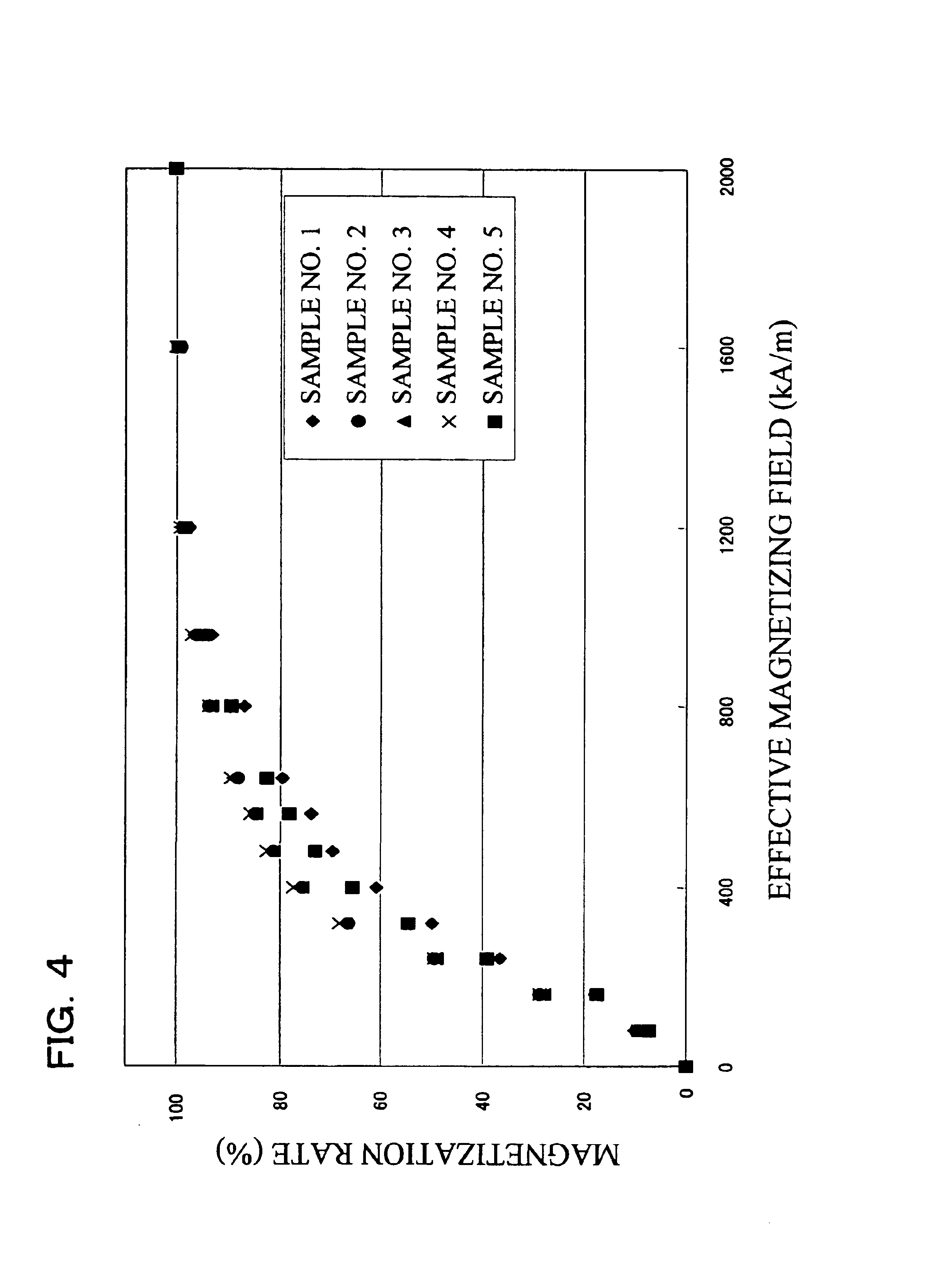R-T-B system rare earth permanent magnet
- Summary
- Abstract
- Description
- Claims
- Application Information
AI Technical Summary
Benefits of technology
Problems solved by technology
Method used
Image
Examples
examples
[0119]The present invention will be further described in the following specific examples. The first example relates to a low coercive force type permanent magnet, and the second example relates to a high coercive force type permanent magnet.
first example
Experiment Example 1
[0120]Master alloys (a low R alloy and a high R alloy) with compositions shown in FIG. 1 were prepared by the strip casting method.
[0121]A hydrogen crushing treatment was carried out on each of the obtained master alloys, in which after hydrogen was absorbed at room temperature, dehydrogenation was carried out thereon at 600° C. for 1 hour in an Ar atmosphere.
[0122]In order to obtain high magnetic properties, the amount of oxygen contained in a sintered body was controlled to 1,000 ppm or less in Experiment example 1. On this account, the atmosphere was controlled at an oxygen concentration of 100 ppm or less throughout processes, from a hydrogen crushing treatment (recovery after a crushing process) to sintering (input into a sintering furnace) (this condition was also applied in the following Experiment examples 2 to 11).
[0123]Generally, two-step crushing is carried out, which includes rough crushing and pulverizing. However, the crushing was omitted in Experim...
experiment example 2
[0132]Three types of permanent magnets (samples 6 to 8) were obtained in the same manner as in Experiment example 1 with the exceptions that the master alloys with the compositions shown in FIG. 6 were used and that the amount of oxygen contained in the final sintered body was fluctuated by controlling the amount of oxygen contained in crushing gas (nitrogen) during the preparation of fine powders. The magnetic properties of the obtained permanent magnets were measured in the same manner as in Experiment example 1. The results are shown in FIG. 7. It is noted that Ts in FIG. 7 represents a sintering temperature and other symbols have the same meanings as in FIG. 2.
[0133]As shown in FIG. 7, it is found that all the permanent magnets of samples 6 to 8 have a residual flux density of 1.4 T or more, a coercive force of approximately 1,000 kA / m, and a high maximum energy product of approximately 400 kJ / m3.
[0134]Subsequently, the permanent magnets of samples 6 to 8 were measured in terms ...
PUM
| Property | Measurement | Unit |
|---|---|---|
| Grain size | aaaaa | aaaaa |
| Grain size | aaaaa | aaaaa |
| Grain size | aaaaa | aaaaa |
Abstract
Description
Claims
Application Information
 Login to View More
Login to View More - R&D
- Intellectual Property
- Life Sciences
- Materials
- Tech Scout
- Unparalleled Data Quality
- Higher Quality Content
- 60% Fewer Hallucinations
Browse by: Latest US Patents, China's latest patents, Technical Efficacy Thesaurus, Application Domain, Technology Topic, Popular Technical Reports.
© 2025 PatSnap. All rights reserved.Legal|Privacy policy|Modern Slavery Act Transparency Statement|Sitemap|About US| Contact US: help@patsnap.com



